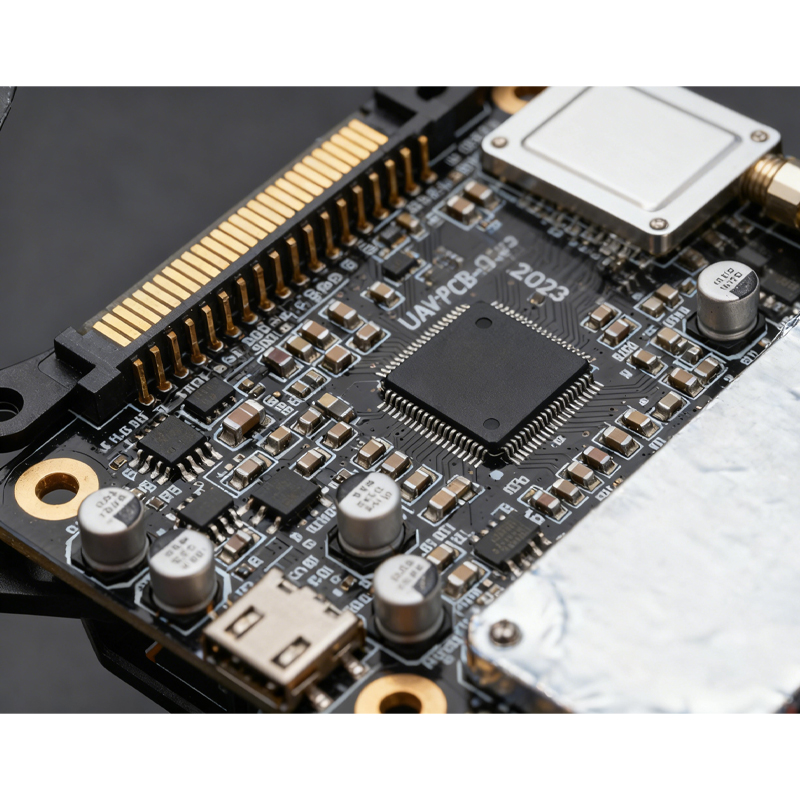Date: 2025-11-19
Alright, let's talk about what's really happening up there in the sky these days. Drones aren't just for cool aerial videos anymore - they're delivering packages, checking power lines, spraying crops, and even helping out in emergencies. But here's the thing: making a drone that actually works reliably in the real world? That's where most companies hit a wall.
The heart of any drone isn't its propellers or camera - it's the printed circuit board assembly (PCBA). This is what makes everything tick. And right now, there are two things that really matter if you want to build drones that don't crash, burn, or run out of juice after ten minutes: making them tough as nails and light as a feather.
Why Your Drone PCBA Needs to Be Tough as Hell
Let's be real - drones live rough lives. They get shaken around, baked in the sun, soaked in rain, and frozen at altitude. If your electronics can't handle that, you're screwed.
Here's how we make sure our boards don't quit when things get rough:
They Can Take a Beating: We use materials that don't get fussy about temperature changes or moisture. Think of it like building with weather-resistant lumber instead of cheap particle board.
No Signal Interference Nonsense: You know how your Wi-Fi gets sketchy when too many devices are connected? Drones face that times a thousand. We design our boards to keep all the signals playing nice together so your GPS doesn't drop out and your controls stay responsive.
They Last: We torture-test our boards because we know delivery drones need to fly for hours and inspection drones can't just decide to take a day off. If a board can't handle the heat (literally), it doesn't ship.
Shaving Weight Without Sacrificing Performance
Every gram counts when you're fighting gravity. Make your drone lighter, and suddenly it can fly longer or carry more important stuff.
Here's our weight-loss program for drone electronics:
Using Lighter Materials: We're talking super-thin boards and tiny components that are barely visible. It's like swapping out your heavy hiking boots for running shoes - same function, way less weight.
Smarter Packing: We fit more functionality into less space using techniques that would make a Tetris champion jealous. Smaller boards mean lighter drones.
Keeping Things Balanced: It's not just about being light - it's about where the weight sits. We arrange components so your drone doesn't fly like a drunk pigeon.
What Makes Us Different From Other PCB Shops
Look, plenty of companies can slap some components on a board. Here's why drone companies keep coming to us:
We Get What You're Building: A crop-spraying drone has different needs than a movie-making drone. We don't just give you a standard board - we give you what actually works for your specific application.
We're Paranoid About Quality: We check everything. Then we check it again. And then we run some extra tests just because we're like that. Your reputation is on the line with every flight, so we make sure our boards won't let you down.
We Have the Right Gear: Working with tiny components requires serious precision. We've got the equipment to handle the smallest parts without breaking a sweat.
We Don't Leave You Hanging: Need a quick design tweak? Wondering where your order is? We answer emails, we update you regularly, and we don't hide behind technical jargon.
The Bottom Line
The drone revolution is happening right now, but it's only going to work if the electronics inside can keep up. Fancy features don't matter if your drone crashes or can't stay in the air long enough to get the job done.
We've helped companies around the world build better drones by giving them circuit boards that are both reliable and lightweight. Not because it's cool, but because that's what actually works when you're operating in the real world.
Ready to stop worrying about your electronics and start building drones that actually deliver? Hit us up and let's talk about what you're working on.
Capel manufacturing PCBs since 2009. Professional technology and high-precision Printed Circuit Boards involved in Medical, IOT, UAV, Aviation, Automotive, Aerospace, Industrial Control, Artificial Intelligence, Consumer Electronics etc..